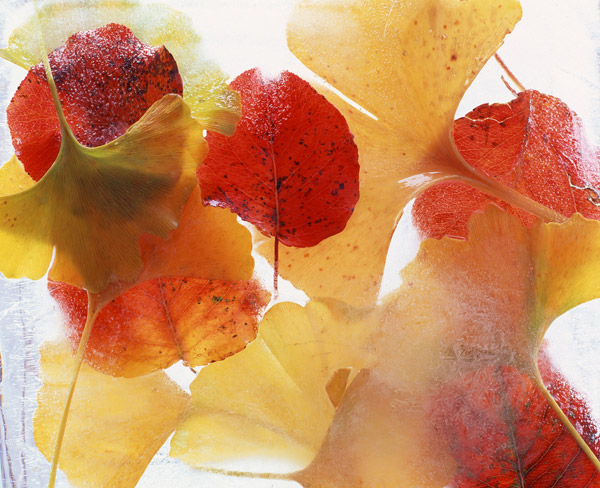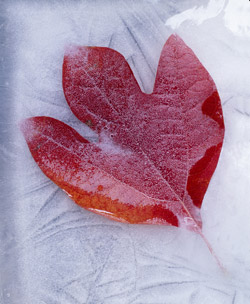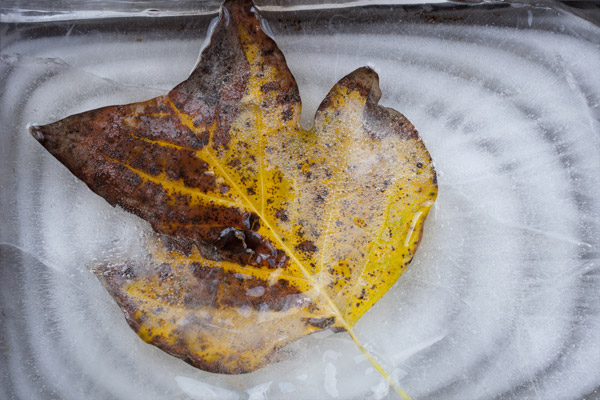Frozen Leaves: Pattern And Design
When the leaves started changing colors, I collected several species of leaves with nice shapes and great color, and then I put them in a plastic or metal tray with 1-2” of water. I placed the container in the freezer, and overnight it was frozen solid. Sometimes I arranged the leaves artfully, and sometimes I tried to make it look entirely random. If a leaf had a particularly beautiful shape, I only froze the one leaf by itself. To make the leaves look more submerged, a second layer of water, perhaps ½” deep, is placed over the ice and then the container is put back in the freezer.
The way the ice crystals form isn’t exactly what you might see in a stream in the woods, but it’s close. To photograph the frozen leaves, make sure the back of the camera is parallel with the plane of the ice for maximum depth of field at any lens aperture, and I recommend using soft and diffused light typical of the overcast conditions so common in autumn. I think the colors will appear richer and more saturated with soft light.
A variation that will make the leaves look like they are glowing from within is to backlight the block of ice. You can take the ice out of the container (tap on the back of the plastic or metal container and it pops out) and set it up in front of a light source. You can use the bright sky as the background, a flash or photoflood (the latter produces heat, so this can’t be used for a long time or the ice will start melting). This type of lighting obviously can’t be done when shooting in a stream, and therefore you can create a very unique interpretation of the autumn leaves.
Photos (#1 and #2) exemplify the glow in the leaves that make them seem luminous. In photos (#3, #4 and #5), I simply put the container in the shade and used the soft lighting. As with all macro work, a tripod is essential even if you have enough light to use a fast shutter speed. This is because the tripod also enables you to use a low ISO for maximum picture quality and a minimum of digital noise, and at the same time you have the luxury of using a small lens aperture to make sure the image is sharp from edge to edge. Another benefit of using a tripod is that when the camera is mounted on the firm support, you can step away from the set up and look at it from the side to determine whether or not it is parallel with the surface plane of the leaves.

All Photos © Jim Zuckerman




I photographed the yellow and brown tulip popular leaf (#6), in the summer. It had fallen from the tree, and in this instance when I took the tray out of the freezer I poured some hot water on it to make the ice crack. This added some authenticity to the picture.













































